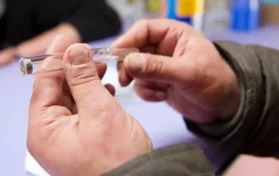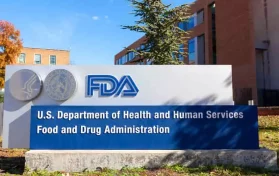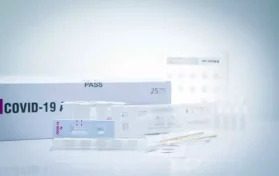
Earlier this week, The Washington Free Beacon reported that the Harm Reduction Program utilized by SAMSHA (Substance Abuse and Mental Health Services Administration) would distribute crack pipes as well as clean syringes, all paid for by taxpayer monies. The news outlet quoted an HHS spokesperson to back the claim, and the media swooped up the story, which quickly rolled across the internet and other news sites.
Soon after, Senator Marsha Blackburn (R-TN) drafted a letter to the Secretary of the Department of Health and Human Services (HHS), Xavier Becerra, demanding a clarification of exactly what is included in the safe smoking kits listed on the Harm Reduction Program paperwork. Becerra was already making the media rounds attempting to clean up the report. On Wednesday, Becerra said that HHS would not utilize taxpayer money to pay for crack pipes, as the initial report stated.
As a part of their report, the Beacon shared that organizations, particularly those in “underserved communities,” are able to apply for a grant provided by SAMSHA’s Harm Reduction Program. A harm reduction program, by definition, is organized in order to prevent further health issues in those dealing with addiction and substance abuse. For instance, these are the programs that provide clean syringes to addicts in an effort to prevent the spread of infectious diseases such as hepatitis or HIV. Opponents of this type of program say that it encourages drug abuse rather than assists the struggling addict.
The news outlet shared graphics including the list of available items that could be provided by those who sponsor Harm Reduction Program services. Listed on the grant were “safe smoking kits” as well as syringes. This list also offered screening for infectious diseases such as hepatitis.
However, it was the alleged quote by an HHS spokesperson who described the safe smoking kits as containing “crack pipes.” This prompted a response by the HHS, and it prompted the letter from Senator Blackburn to HHS Secretary Becerra, whom she instructed to respond by March 1.
Becerra and the Office of National Drug Control Policy released a statement on Wednesday, shortly after nationwide news outlets picked up the “crack pipe” story. In the release, Becerra said: “(the Biden Administration) is focused on using our resources smartly to reduce harm and save lives. Accordingly, no federal funding will be used directly or through subsequent reimbursement of grantees to put pipes in safe smoking kits.”
Multiple members of the Biden Administration flooded the media in an attempt to clean up the negative press which the Harm Reduction program was garnering. White House Press Secretary Jen Psaki took to the microphone during a Wednesday briefing. She called the reporting “inaccurate” and claimed that crack pipes were never intended to be part of the safe smoking kits listed on the grant application.
The Washington Free Beacon reporter Patrick Hauf reiterated that he had spoken with a representative from HHS whom he said both “confirmed and defended” the placement of not only crack pipes but other drug paraphernalia to be distributed as a part of the Harm Reduction Program. Hauf claims the spokesperson promoted distribution of these items as “effective at stopping spread of disease.”
The Beacon’s Brent Scher said the newspaper further reached out to confirm if these glass pipes could be used to smoke crack and meth. Scher claims the HHS spokesperson responded: “I wouldn’t limit to those two substances. It would reference ‘any illicit substance.'”
Becerra did admit that clean syringes, considered drug paraphernalia, would be a part of the Harm Reduction Program. Critics have questioned how the government can use taxpayer money to pay for items that, if the recipient is stopped by police after obtaining the items, could result in the individual being charged with a misdemeanor. (Possession of paraphernalia is NOT a federal charge; it is typically a state charge. Most states charge it as a misdemeanor.)
Becerra’s statement issued a stern reminder that the goal of harm reduction “is to save lives.” The press release added: “The administration is focused on a comprehensive strategy to stop the spread of drugs and curb addiction, including prioritizing the use of proven harm reduction strategies like providing naloxone, fentanyl test strips, and clean syringes. . . We continue to work to address the addiction epidemic and ensure that our resources are used in the smartest and most efficient manner.”





